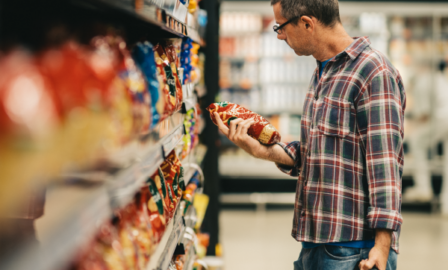2024 Beverage Industry Trends
Clarkston’s team of food and beverage industry consultants have highlighted the top beverage industry trends that businesses should consider. Read all 4 trends for 2024 by downloading the full report here.
The beverage industry is constantly undergoing remarkable transformations, influenced by evolving consumer preferences, market and competitive dynamics, and the pursuit of sustainable and responsible business practices. This report explores four key beverage industry trends that have been shaping the landscape in recent years and highlights what companies are doing to stay ahead in an ever-evolving market in 2024.
- The Dramatic Rise of 0% ABV
- Concentration in Brand Collaboration
- Premium Acquisitions Driving Market Growth & Diversification and Tech Standardization
- Renewed Focus on Transparent Sustainability
2024 Beverage Industry Trends
Trend #1: The Dramatic Rise of 0% ABV
Until recently, 0% ABV beers were often relegated to the bottom shelf in retail because of their low demand and limited product offerings. However, the COVID-19 pandemic accelerated intense health-consciousness trends among consumers. As a result, beverage companies have focused much of their innovation in the category and massively ramped up production quantities. Many of these innovations are premium positioned and gaining a significant share of menu in restaurants and of shelves in beverage retail outlets.
The biggest contribution to the non-alcohol category’s growth (70%) is no-alcohol beer and cider. By matching increasing consumer demand with excellent placement, beverage companies are experiencing massive growth in the non-alcoholic beer sector. Category sales are up more than 32% from last year and are averaging 31% growth over the previous four. Importantly, these sales aren’t cannibalizing alcoholic beverage sales, as a vast majority of non-alcoholic beer buyers also buy alcohol.
It’s not just beer manufacturers riding this trend: non-alcoholic spirit sales are accelerating as well. Diageo’s Captain Morgan Rum brand announced in late August that they will be launching an alcohol-free spiced gold rum. Challenger brands are winning as well. For example, Ritual Zero Proof, a distiller producing a wide variety of 0% ABV spirits, is projecting a 10% CAGR over the next 10 years. This is being driven by consumers who enjoy the taste and social aspect of drinking while simultaneously maintaining their values around health. Further, more than 70 new non-alcoholic drink SKUs were introduced to the U.S. market, with many more on pace to release this year. More product offerings within brands and more non-alcoholic lines are projected to be released in the future, and we expect this trend to maintain and grow over the coming years.
Download the Full 2024 Beverage Industry Trends Report Here
Trend #2: Concentration in Brand Collaboration
From movie stars to athletes to social media influencers, celebrities have been the face of marketing for well over 50 brands of alcohol and sports drinks for years. Some are still getting into the game: take Logan Paul’s and KSI’s Prime for example, who we highlighted in last year’s report. The brand launched in 2022 and is already set to pass $1.2 billion in sales this year alone. On the flip side, many other celebrities have been exiting the game: Conor McGregor selling Proper No. Twelve, Ryan Reynolds selling Aviation Gin, and George Clooney and partners selling Casamigos, to name a few.
All of the celebrities mentioned above had their brands for less than four years before selling. This timing is no coincidence; many large corporations would rather buy the brand at a premium early instead of partnering with a celebrity because of the associated risk of tying the brand to the image and/or press of a high-profile individual. For example, the Travis Scott CACTI Seltzer brand lasted less than a year because of the controversy surrounding the Astroworld Festival tragedy.
This risk has driven beverage industry leaders to look for stable partnerships with those who both understand the industry and what it takes for products to succeed in the modern market. For example, the Brown-Forman Coca-Cola partnership that spawned the Ready-To-Drink (RTD) Jack Daniel’s and Coca-Cola has been a massive success. In the 2023 fiscal year, that partnership fueled double-digit net sales growth of 11% for Brown-Forman. Another massive success has been the Coca-Cola and Molson Coors partnership that created Topo Chico Hard Seltzer and Simply Spiked Lemonade. More mega-collaborations are in the works as well: a Sprite & Absolut canned RTD cocktail is set to debut in several European countries in early 2024.
In all of these collaborations, there has to be a clear win-win for both parties. Across many recent partnerships and influencer-led brand expansions, we see a concentration on those with the greatest economic profit potential as well as a focus between partners on true value-driven partnerships.
Continue reading by downloading the full report below.
Download the Full 2024 Beverage Industry Trends Report Here
Read last year’s Beverage Industry Trends Report here.
Subscribe to Clarkston's Insights
Contributions from David Mathai



